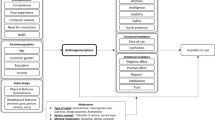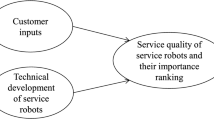Abstract
As robots are generally thought to perform human-like tasks, they depend on the successes of information technology in the area of artificial intelligence to succeed in such pursuits. But robots, through their anthropomorphic character and their weighty presence in science fiction, attract the attention of the press and the media in a way that, at times, blurs the distinction between the actual state of the art and exaggerated claims. This makes it hard to assess the true functional positioning of robots, how this is likely to move forward and whether the outcome of progress could be detrimental to human society. The aim of this paper is to review the actual level of competence that is being achieved in robotics research laboratories and a plausible impact that this is likely to have on human control over life and jobs. The key thesis here is that cognition in machines and even an artificial form of consciousness lead to operations in a set of tasks (the ‘algorithmic’ category) which is different from that available to truly cognitive and conscious human beings (the ‘life-need’ category): that is, in the paper it is argued that a major category error (Ryle in The concept of mind, University of Chicago Press, Chicago, 1949) looms in predictions of serious threats to humanity. As far as a threat to jobs goes, it is argued that early attention to education and re-skilling of humans in the workplace can lead to an effective symbiosis between people and robots.
Similar content being viewed by others
References
Adams, S., et al. (2015). Mapping the Landscape of Human-Level Artificial General Intelligence. AI Magazine, 33(1), 25–41.
Aleksander, I. (2005). The World in My Mind, My Mind in the World. Exeter: Imprint Academic.
Aleksander, I. (2008). http://www.scholarpedia.org/article/Machine_consciousness.
Aleksander, I. (2012). Design and the Singularity: The Philosophers Stone of AI? Journal of Consciousness Studies, 19(7–8), 8–13.
Aleksander, I. (2015). Impossible Minds: My Neurons, My Consciousness, 2nd, revised edition. London: Imperial College Press.
Aleksander, I., and Dunmall, B. (2003). Axioms and Tests for the Presence of Minimal Consciousness in Agents. Journal of Consciousness Studies, 10(4–5), 7–18.
Allen, P. (2016). http://www1.cs.columbia.edu/robotics/.
Aloimonos, Y. (2016). https://www.umiacs.umd.edu/people/yiannis.
BBC News (2015). http://www.bbc.com/news/world-asia-pacific-34272425.
Goertzel, B. (2014). Ten Years to the Singularity If We Really, Really Try. Los Angeles: Humanity Press.
Good, I. J. (1965). Speculations concerning the first ultraintelligent machine. In F. Alt, M. Rubinoff (Eds.), Advances in Computers (Vol. 6, pp. 31–88).
Kurzweil, R. (2005). The Singularity is Near. New York: Viking Press.
Live Science (2013). http://m.livescience.com/29379-intelligent-robots-will-overtake-humans.html.
Mohammad, Y., and Nishida, T. (2015). Data Mining for Social Robotics: Toward Autonomously Social Robots. New York: Springer.
Nilsson, N. (2005). Human-Level Artificial Intelligence? Be Serious! AI Magazine, 26(4), 68–75.
O’Regan, J.K., and Noë, A. (2001). A Sensorimotor Account of Vision and Visual Consciousness. Behavioral and Brain Sciences, 24(5), 883–917.
Research Center for Brain-Inspired Intelligence (2016). http://brain-eng.ia.ac.cn/index.html.
Roberts, A. (2006). The History of Science Fiction. New York, NY: Palgrave McMillan.
Robotics in Japan (2016). http://transit-port.net/Lists/Robotics.Org.in.Japan.html.
Ryle, G. (1949). The Concept of Mind. Chicago: University of Chicago Press.
Shanahan, M. (2015). The Technological Singularity. Boston: MIT Press.
Strassmann, P. A. (1985). Information Payoff: The Transformation of Work in the Electronic Age. New York: The Freedom Press.
Versace, M. (2011). Neurdon. http://www.neurdon.com/2011/03/25/the-china-brain-project/.
Vinge, V. (1983). First Word (p. 10). Omni.
Vinge, V. (1993). The coming technological singularity: How to survive in the post-human era. In Vision 21: Interdisciplinary Science and Engineering in the Era of Cyberspace (pp. 11–22).
Willcocks, L. (2016). Huffington Post. http://www.huffingtonpost.co.uk/leslie-willcocks/will-robots-really-take-over-our-jobs_b_9523626.html.
Yahoo Tech. News (2016). Tech. News. https://www.yahoo.com/tech/intelligent-robots-threaten-millions-jobs-074206378.html.
Author information
Authors and Affiliations
Corresponding author
Rights and permissions
About this article
Cite this article
Aleksander, I. Partners of humans: a realistic assessment of the role of robots in the foreseeable future. J Inf Technol 32, 1–9 (2017). https://doi.org/10.1057/s41265-016-0032-4
Published:
Issue Date:
DOI: https://doi.org/10.1057/s41265-016-0032-4




